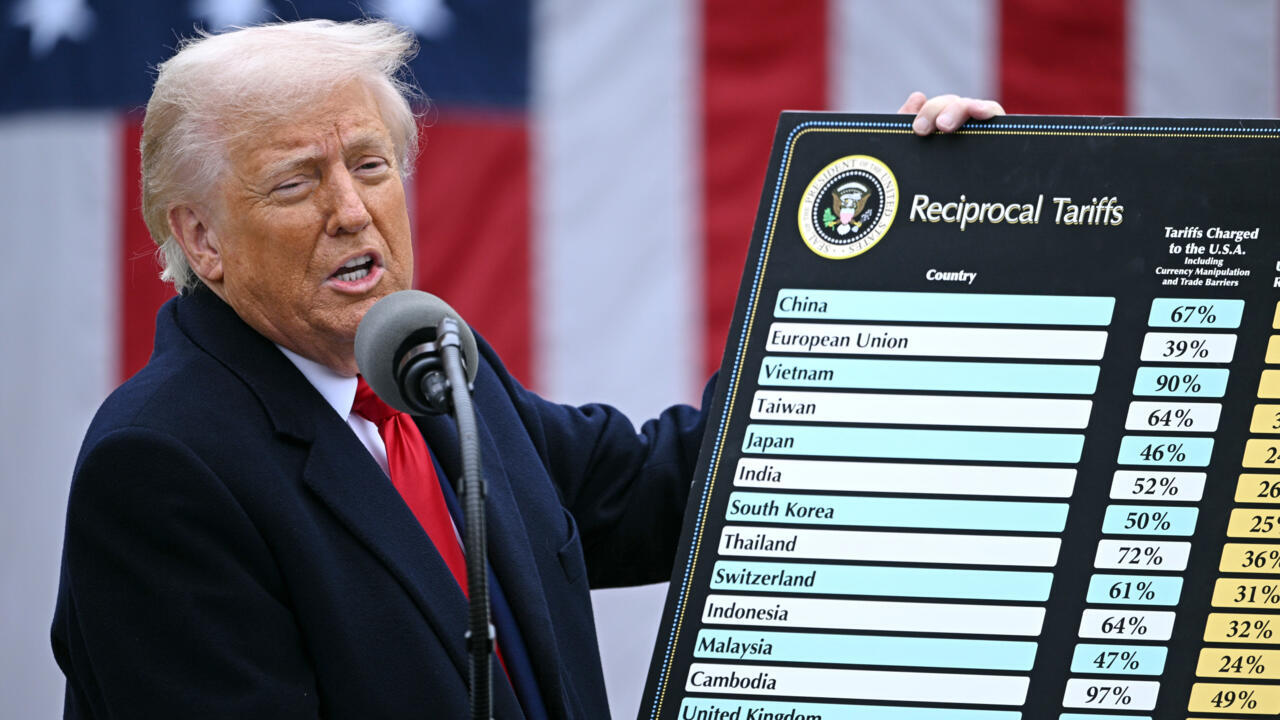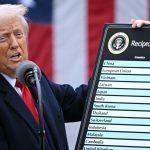The U.S. trade landscape has been shaken by a landmark decision: an appeals court has ruled that multiple tariffs imposed during Donald Trump’s presidency were unlawful. This ruling, described by trade experts as one of the most consequential in recent years, carries implications not only for the United States but also for global markets, international relations, and the future of executive trade authority. The decision highlights the limits of presidential power in imposing duties and raises fundamental questions about how trade disputes should be resolved in a system governed by law.
- The Origins of Trump’s Tariffs
- The most notable actions included:
- The Legal Challenge
- The appeals court’s ruling centered on two main points:
- Global Reaction
- Economic Impact
- Political Fallout
- Expert Perspectives
- Impact on U.S.-China Relations
- What Happens Next?
- FAQs
- What did the appeals court decide about Trump’s tariffs?
- Which tariffs are affected by the ruling?
- Will U.S. businesses get refunds on tariffs they paid?
- How does this affect U.S.-China trade relations?
- Could this change how future presidents use tariffs?
- What does this mean for American consumers?
- If tariffs are reduced or refunded, it could ease prices on imported goods. However, the long-term impact depends on how trade policy evolves.
- Conclusion
For years, Trump’s tariffs on steel, aluminum, Chinese imports, and other products were at the center of a heated global debate. They were praised by supporters as tools to protect American industries and workers but criticized by economists, trade partners, and businesses as protectionist measures that disrupted global commerce. With the court’s ruling, the legitimacy of those tariffs has been directly challenged, setting the stage for potential refunds, renegotiations, and a rethinking of U.S. trade strategy.
This article will break down the decision, explore its legal and economic dimensions, and analyze how it affects businesses, consumers, and America’s role in global trade.
The Origins of Trump’s Tariffs
Donald Trump entered the White House in 2017 with a promise to reshape U.S. trade policy. He often described trade agreements as “unfair” to America and accused countries like China of manipulating the global system. His administration quickly began using tariffs as leverage, introducing sweeping duties on foreign imports.
The most notable actions included:
Steel and aluminum tariffs under Section 232 of the Trade Expansion Act of 1962, citing national security grounds.
Broad tariffs on Chinese imports under Section 301 of the Trade Act of 1974, targeting what the administration called unfair trade practices.
Additional tariffs on products from the European Union, Canada, and Mexico during disputes over subsidies and intellectual property.
By 2019, these measures covered more than $350 billion worth of goods, affecting everything from construction materials to consumer electronics. Trump argued that the tariffs were bringing factories back to America and pressuring China to negotiate. However, critics countered that they amounted to a tax on American consumers and strained relationships with allies.
The Legal Challenge
While trade disputes are common, the legal battle over Trump’s tariffs escalated quickly. Multiple lawsuits were filed by importers, trade associations, and industry groups. Their argument was simple: the administration had exceeded its authority under U.S. trade law by applying tariffs that were too broad, extended beyond statutory deadlines, or not properly justified.
The appeals court’s ruling centered on two main points:
Overreach of Executive Power – The court determined that the president had exceeded the authority granted under Section 301 and Section 232 by extending tariffs without sufficient justification or procedural compliance.
Lack of Transparency and Due Process – The judges noted that affected parties were not given adequate opportunity to contest the tariffs or review the administration’s evidence.
In essence, the court ruled that while the president has significant latitude on trade matters, that authority is not unlimited. As one trade law expert summarized: “The ruling underscores that the executive branch must follow the letter of the law when imposing measures that have such wide economic impact.”
Global Reaction
The decision sparked immediate international interest. China, which had borne the brunt of Trump’s tariff strategy, welcomed the development as a validation of its longstanding argument that U.S. trade actions were politically motivated rather than legally sound. European officials echoed similar sentiments, noting that the ruling could help reset trade diplomacy.
For American allies like Canada and Mexico, the court’s decision reopened old wounds. Both countries were subjected to tariffs despite being close U.S. partners. The ruling may embolden them to seek compensation for damages suffered during the tariff period.
Economic Impact
The economic stakes of the ruling are enormous. According to estimates, American importers paid over $100 billion in tariffs during Trump’s presidency. Many of these costs were passed on to consumers in the form of higher prices.
If the ruling leads to refunds or retroactive adjustments, it could mean billions in reimbursements for U.S. businesses. For small and medium-sized companies that struggled to absorb tariff costs, such refunds could provide much-needed relief.
However, experts warn that the uncertainty created by the decision could also complicate current trade negotiations. The Biden administration has maintained some of Trump’s tariffs, particularly on China, arguing they remain useful bargaining chips. Now, with the legal foundation undermined, Washington may face pressure to reconsider its entire tariff strategy.
Political Fallout
Politically, the ruling adds fuel to the debate over Trump’s economic legacy. Supporters argue that regardless of legality, the tariffs drew attention to long-ignored trade imbalances and forced China into the negotiating room. Opponents contend that the tariffs damaged U.S. credibility, alienated allies, and increased costs for American families.
For Trump, who remains a central figure in U.S. politics, the court’s decision could become a campaign talking point. He has already suggested that “unelected judges” should not dictate trade policy. Legal scholars, however, emphasize that the judiciary exists precisely to check the overreach of executive power.
Expert Perspectives
Many economists and trade specialists have weighed in on the ruling.
Mary Lovely, a senior fellow at the Peterson Institute for International Economics, said: “This decision is historic. It clarifies that while presidents have tools to defend national interests, they cannot wield tariffs as blunt political instruments without legal basis.”
Lawrence Gostin, a legal analyst, noted: “The ruling may prevent future administrations from unilaterally weaponizing trade laws. It restores balance between Congress, the executive, and the courts.”
Business leaders from manufacturing and retail sectors have expressed relief, with one importer commenting: “We’ve been fighting uphill against arbitrary costs for years. This decision gives us hope of fairer treatment.”
Impact on U.S.-China Relations
The ruling also reverberates through U.S.-China relations. During Trump’s presidency, tariffs became the centerpiece of his strategy to counter Beijing’s economic rise. While the tariffs hurt China’s exports, they also pushed Beijing to diversify trade partners, accelerating its outreach to Europe, Africa, and Asia.
With the tariffs now under legal question, China may push for their immediate removal in ongoing negotiations. The ruling gives Beijing fresh leverage to argue that Washington must roll back measures imposed illegally.
What Happens Next?
The appeals court decision does not automatically remove all tariffs but establishes a legal precedent. The Biden administration will likely appeal further or seek ways to re-impose tariffs through proper legal channels. Meanwhile, businesses are expected to file claims for refunds, which could trigger complex administrative battles.
Congress may also revisit the scope of presidential trade authority. Lawmakers across both parties have expressed frustration with the unchecked use of tariffs, suggesting reforms may be on the horizon.
FAQs
What did the appeals court decide about Trump’s tariffs?
The court ruled that multiple tariffs imposed during Trump’s presidency were illegal because they exceeded presidential authority and violated due process requirements.
Which tariffs are affected by the ruling?
The ruling primarily affects tariffs imposed under Section 232 (steel and aluminum) and Section 301 (Chinese imports).
Will U.S. businesses get refunds on tariffs they paid?
It is possible, but refunds will depend on further legal and administrative processes. Businesses are expected to file claims.
How does this affect U.S.-China trade relations?
The ruling strengthens China’s argument that U.S. tariffs were unjustified, potentially giving Beijing leverage in future negotiations.
Could this change how future presidents use tariffs?
Yes. The decision sets a precedent that future presidents cannot impose broad tariffs without strict compliance with legal procedures.
What does this mean for American consumers?
If tariffs are reduced or refunded, it could ease prices on imported goods. However, the long-term impact depends on how trade policy evolves.
Is this ruling final?
No. The administration may appeal further, and Congress may intervene to clarify trade law.
Conclusion
The appeals court ruling against multiple Trump tariffs is more than just a legal technicality—it is a watershed moment in U.S. trade history. It signals that even presidents must operate within the boundaries of the law and that economic policies with global consequences cannot be enacted without due process.
For businesses, it opens the door to possible financial relief. For policymakers, it offers a chance to rethink America’s approach to trade in a world defined by competition, cooperation, and complex interdependence.
As one observer put it, “This ruling reminds us that trade is not just about economics. It is about law, fairness, and the credibility of America’s word in the global marketplace.”








